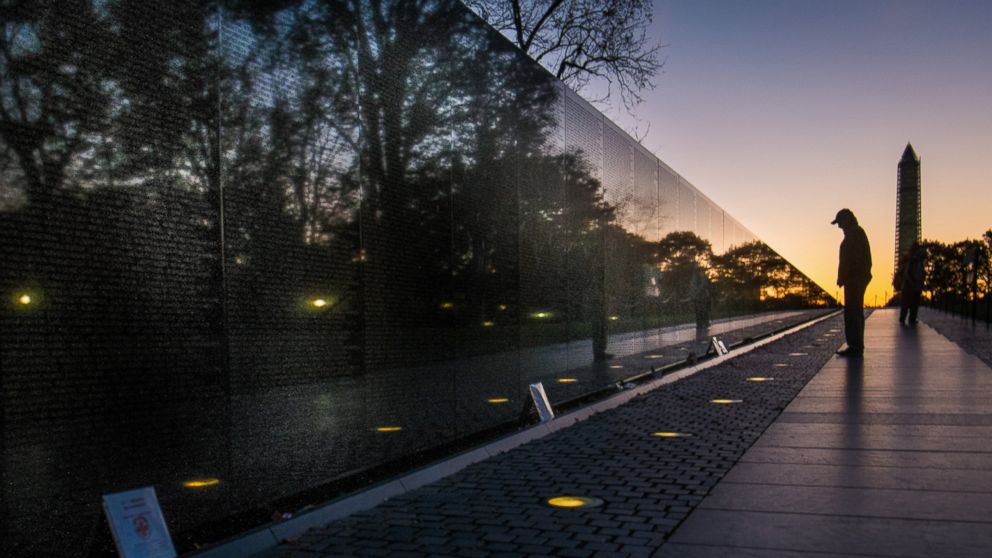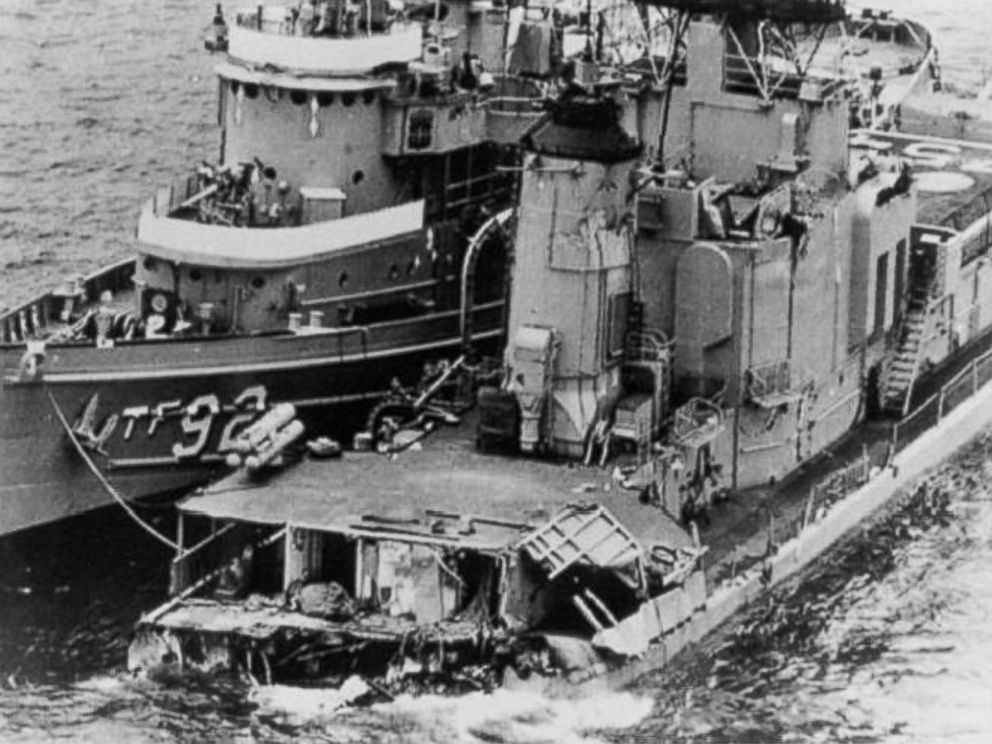Heartbreak, Hope in Quest to Add 74 Names to Vietnam Memorial
Loved ones are still fighting for recognition of servicemen 40 years later.

APRIL 10, 2014— -- Just off the National Mall in Washington, D.C. stands a large, black stone wall, more than 245 feet in length. Etched in its reflective surface are 58,286 names of U.S. service members who lost their lives decades ago a half a world away.
This is the Vietnam Veterans Memorial, but some believe it is incomplete.
Nearly 40 years after the war’s end, some families are still fighting for their loved ones’ service to be recognized, and for their names to be inscribed onto the slab of smooth granite.
On a wall with more than 58,000 names, how hard is it to add another 74? Harder than you might think.
The Story of the USS Frank E. Evans
For more than three years, Rep. Adam Schiff, D-Calif., has been working with members of the Frank E. Evans Association, a group of former service members and families, who have long been fighting to have 74 names added to the memorial. The names belong to men who lost their lives aboard the USS Frank E. Evans during the war, and have been left off the memorial, they say, because of a technicality.
But a new push by Schiff to have Defense Secretary Chuck Hagel recognize these fallen servicemen has brought new hope to the families. Schiff recently met with Hagel, a Vietnam vet himself, to ask for help.
“I found their story very compelling -- how long and hard they’d been trying to seek recognition on the memorial -- and it seemed very unjust,” Schiff said in a recent interview with ABC News. “Their families were not being recognized.”
Indeed, for the California congressman, the story hits close to home. One of his constituents lost his father on the Evans, and brought the story of the ship to Schiff.
After leaving the United States for Vietnam in March 1969, the USS Evans arrived in Vietnamese waters in early May. It served as naval gunfire support until the end of the month when the ship left its post to get more supplies. While reloading, the Evans was ordered to take part in a training exercise with 40 other vessels in the South China Sea. It was during that exercise that the Evans collided with an Australian aircraft carrier, the Melbourne, ripping the Evans in half.
Stephen Kraus, the vice president of the Frank E. Evans Association, was on duty that night.
“I knew we were going to hit,” Kraus said, recalling his effort to warn shipmates of the impending disaster. “[I] screamed ‘We’re going to get hit!’ and then it happened.”

Exceptions Have Been Made
More than 300 names had been added to the wall as of Memorial Day 2013, according to the Vietnam Veteran Memorial Fund. Fourteen new names are slated to be honored on the wall in May. Some of these cases bear a striking resemblance to the Evans tragedy.
One of the exceptions occurred in 1983 when President Ronald Reagan ordered that the names of 68 marines who died in a plane crash on their way back to Vietnam after leave should be honored on the memorial. Because the plane had orders to return to the combat zone, officials decided that their names qualified.
The Evans Association tried to apply this reasoning to the 74 men lost on the ship, but the group was told that there was no official indication that the Evans would return to the combat zone.
In a recent interview, Louise Esola, who has spent four years researching the Evan’s tragedy, and wrote a forthcoming book, “American Boys: The True Story of the Lost 74 of the Vietnam War,” said she disagrees.
“It’s absurd for the Department of Defense to say that there was no proof that the Evans was going back to the gun line, because every ship went back there,” she said.
Adding to the frustration of the families, the ship was supposed to have received its 15th Vietnam Service Medal for the work they did the very day it sank.
“They were outside of the combat zone, but they had to be doing something related to the war to get the Vietnam Service Medal,” Esola said. Other ships that participated in the same training exercise also received this award, as well as the ship that was brought in to tow the surviving section of the Evan’s to shore. “It’s not a mistake. Every other ship received a Vietnam Service Medal for that time period,” Esola said. “They should go on the wall. People have gotten on the wall with less.”




